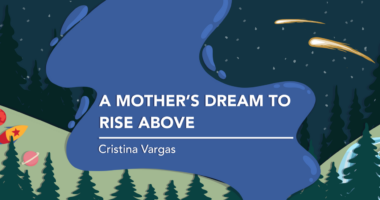My Road to Big Victories for CLN1 Disease
With 350 million patients, rare diseases represent the largest disease community on the planet. In fact, if all rare disease patients lived in the same country, they would represent the world’s third-largest country, behind only China and India.
Of course, with so many included conditions (more than 7,000 and counting), the rare disease experience is as singular as it is shared. As one of two healthy siblings in a family affected by CLN1 disease (Batten disease), I’ve had to find my own way forward as much as I’ve leaned on the experiences of others for survival.
My sister, Taylor, was diagnosed with CLN1 disease on a hot summer day in 2006, just a few weeks prior to her 8th birthday. It was a crushing blow for a family whose youngest member struggled with her night vision and multiplication tables but didn’t seem sick.
I was newly married, with a great marketing job at a large healthcare system and a mostly drafted manuscript for a young adult novel. I had my whole life ahead of me. But I knew my sister deserved better than what the doctors prescribed that day: Surrender to an inevitable early death and make lots of happy memories in the meantime. Within months, and thanks to the help of good friends, my mother and I founded Taylor’s Tale.
Since then, I’ve been lucky to play a small part in big victories for people fighting CLN1 disease and other rare diseases. I’ve been equally unlucky to learn the hard way that sometimes, miracles just don’t come quickly enough.
Following are some of the lessons I’ve learned in 13 years as a rare disease sibling and advocate:
Don’t forget to make happy memories. The actual delivery could have been better, but the doctor who diagnosed Taylor with CLN1 disease was right in one sense. I’m so glad we made memories with my sister, whether that meant taking her to Disney World before she succumbed to blindness, going for walks in the spring sunshine, or purchasing supplies for at-home pedicures on a girls’ trip to the beach. It will never be enough, but I’m grateful for the time we had together.
Find your comrades. Even if you aren’t facing a devastating, chronic disorder like CLN1 disease, it’s crucial to build your support network. We all need friends who can satisfy our most basic needs — from sound advice to a shoulder to cry on — to get through the trials of life. For you, this may be others facing the same or a similar diagnosis, or it may be friends from work or school (or even your Life Before Batten Disease). I’ve leaned on countless people to help me get through the years, both as a shattered big sister and a passionate rare disease advocate.
If they say it can never be done, prove them wrong. Thirteen years ago, CLN1 disease was so far off the clinical radar, and the rare disease community so much more fractured, that no one gave Taylor a chance. We really were living in the Dark Ages, and it’s easy to understand all of the doubt. But we took cues from Taylor — the little girl who was actually sick yet whose courage drove us to channel her terrible fate into something productive.
I like to say that Taylor taught me that overcoming obstacles is mostly about having the courage to look at them from a different perspective. It’s that mantra that guided Taylor’s Tale, the public charity we founded in her name, to many successes over the years: promising research, game-changing awareness, and impactful advocacy, including a historic North Carolina law named for her. Even Food and Drug Administration clearance and U.S. and European trial sites for a gene therapy treatment we spearheaded, announced just recently.
The road to today had its fair share of hurdles and detours, but we didn’t give up. We followed our passion. We did our best for the sake of the patients who couldn’t fight on their own. And we won’t stop fighting, even though my sister lost her brave battle in September 2018.
I’m excited to join Batten Disease News with this column, named “The Long Sprint,” and in the coming months, I look forward to diving into some of these stories and ideas in more detail. You can also learn more about my own journey by picking up a copy of my book, “Run to the Light,” published last November. Until then, thanks for reading, and keep believing!
***
Note: Batten Disease News is strictly a news and information website about the disease. It does not provide medical advice, diagnosis, or treatment. This content is not intended to be a substitute for professional medical advice, diagnosis, or treatment. Always seek the advice of your physician or other qualified healthcare provider with any questions you may have regarding a medical condition. Never disregard professional medical advice or delay in seeking it because of something you have read on this website. The opinions expressed in this column are not those of Batten Disease News or its parent company, BioNews Services, and are intended to spark discussion about issues pertaining to Batten disease.







Comments